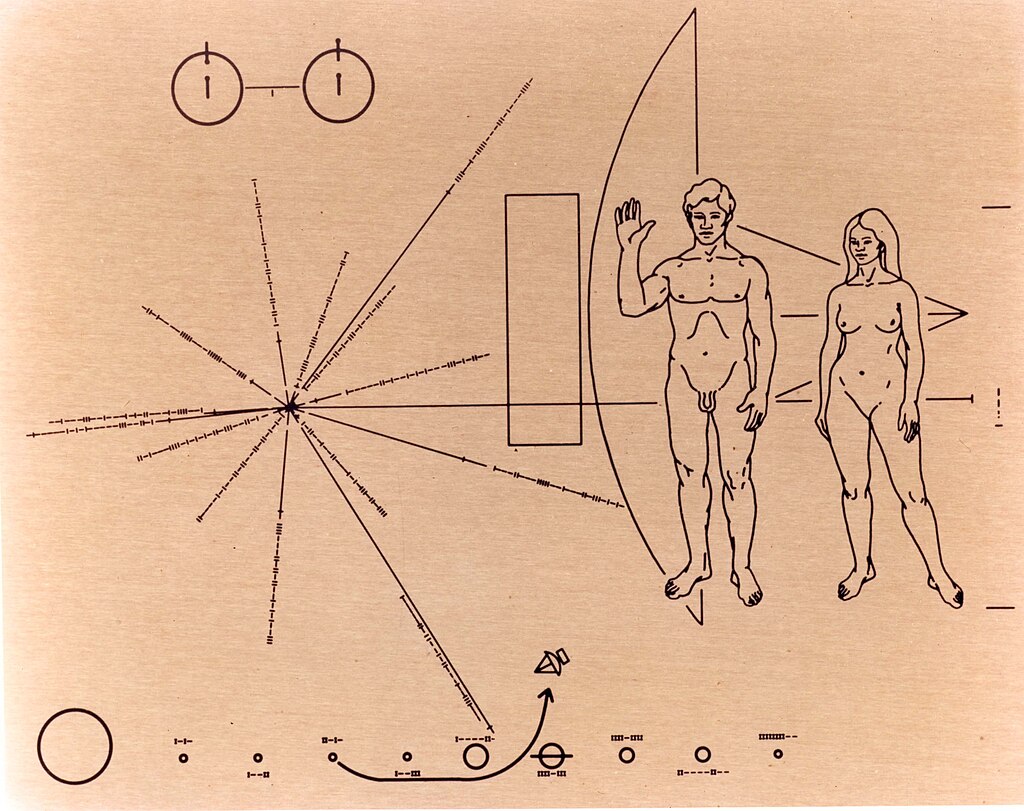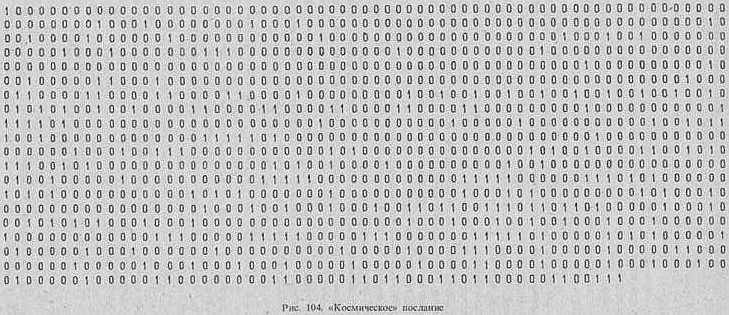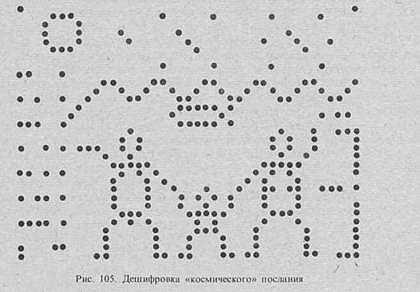SETI #
Fermi Paradox & Drake Equation #
Paradox Fermi #
The Fermi paradox is the discrepancy between the lack of conclusive evidence of advanced extraterrestrial life and the apparently high likelihood of its existence.
Drake Equation #
$$ N = R_* \times f_p \times n_e \times f_l \times f_i \times f_c \times L $$
@@N@@ - the number of civilizations currently transmitting signals, depends on seven factors:
@@R_* @@ is the yearly formation rate of stars hospitable to planets where life could develop
@@f_p@@ is the fraction of those stars with planets
@@n_e@@ is the number of planets per solar system with conditions suitable for life
@@f_l@@ is the fraction of planets suitable for life on which life actually appears
@@f_i@@ is the fraction of planets with life on which intelligent life emerges
@@f_c@@ is the fraction of planets with intelligent life that develops technologies such as radio transmissions that we could detect
@@L@@ is the average length of time in years that civilizations produce such signs
Original Estimates #
“There is considerable disagreement on the values of these parameters, but the ’educated guesses’ used by Drake and his colleagues in 1961 were:”
- @@R_* = 1\ yr^{−1}@@ (1 star formed per year, on the average over the life of the galaxy; this was regarded as conservative)
- @@f_p@@ = 0.2 to 0.5 (one fifth to one half of all stars formed will have planets)
- @@n_e@@ = 1 to 5 (stars with planets will have between 1 and 5 planets capable of developing life)
- @@f_l@@ = 1 (100% of these planets will develop life)
- @@f_i@@ = 1 (100% of which will develop intelligent life)
- @@f_c@@ = 0.1 to 0.2 (10–20% of which will be able to communicate)
- @@L@@ = somewhere between 1000 and 100,000,000 years
Inserting the above minimum numbers into the equation gives a minimum N of 20 (see: Range of results).
Inserting the maximum numbers gives a maximum of 50,000,000.
Drake states that given the uncertainties, the original meeting concluded that N ≈ L, and there were probably between 1000 and 100,000,000 planets with civilizations in the Milky Way Galaxy."
Current estimates #
You can find current estimates here
They give results varying from: $$ N = 1.5 \times 10^{−5} \times 10^{−9} \times 0.2 \times 304 = 9.1 \times 10^{−13} $$
i.e., suggesting that we are probably alone in this galaxy, and possibly in the observable universe
to $$ N = 3 × 1 × 0.2 × 0.13 × 1 × 0.2 × 109 = 15,600,000 $$.
Focal points (Lefebvre, Makovetsky) #
The notion of the focal point for communication was researched separately by Lefebvre and Makovetsky.
In particular, Makovetsky suggested using frequencies @@\pi \times @@ frequency for hyperfine transition of neutral hydrogen (in other words). “The spin-flip transition of a hydrogen atom’s electron has a frequency of about 1420.405 MHz, which corresponds to a period of 0.704 ns. Light at this frequency has a vacuum wavelength of 21.106 centimetres (8.309 in).”
Basically, it is @@\pi@@ that makes it the focal point (the base frequency meets the consensus).
Don’t forget about False Consensus Effect (or False Focal Point Effect): We assume everyone is like us, so our beliefs about others are derived from our knowledge of ourselves.
Also, cf. Anthropic Principle
- Vladimir A. Lefebvre. THE ANTHROPIC PRINCIPLE IN PSYCHOLOGY AND HUMAN CHOICE
- Anatol Rapoport. HUMAN REFLEXION AND THE ANTHROPIC PRINCIPLE. Commentary on Lefebvre on Human-Choice
Pioneer plaque #
Carl Sagan holding the Pioneer plaque in City Hall Plaza, March 1972:


The Pioneer plaques are a pair of gold-anodized aluminum plaques that were placed on board the 1972 Pioneer 10 and 1973 Pioneer 11 spacecraft, featuring a pictorial message, in case either Pioneer 10 or 11 is intercepted by intelligent extraterrestrial life. The plaques show the nude figures of a human male and female along with several symbols that are designed to provide information about the origin of the spacecraft.
Drake’s Image (by I.S. Shklovsky) #


In the original/Oригинал:
“The effectiveness of the method of transmitting information by means of an image was wittily demonstrated by Drake at a radio astronomy conference in Green Bank (USA). Suppose, he said, that from some star are regularly received radio pulses of short duration, separated by intervals that are multiples of the pulse duration. At first glance, these intervals are scattered haphazardly. After a certain period of time, the same sequence of pulses is repeated. This should clearly indicate their artificial origin. If we represent each pulse by a unit and the “empty” time interval, equal in duration to the pulse duration, by a zero, we get the record shown in Fig. 104. Drake invited the conference participants to decipher this signal. The most surprising thing is that very soon a considerable number of participants coped with this task.
The course of their reasoning was as follows. In total, the record contains 1271 characters (ones and zeros). The number 1271 is the product of two simple factors 41 x 31. Naturally there is an assumption that the signal is a frame of television image, which has 31 lines and 41 elements in a line (can be, of course, vice versa, but this would turn the image by 90 °, which is not essential). Since most of the characters are zeros, the image is contoured. Let’s expand this image by lines, and instead of units we will put black circles. Then we will get a funny picture, shown [above].
This picture contains quite a wealth of information. First of all, we can see that the intelligent beings inhabiting the planet are anthropomorphic and reproduce in the same way as their colleagues in intelligence inhabiting the Earth. They have an important social unit such as the family. The rough circle in the upper left corner of the picture should represent their Sun, and the row of dots along the left edge of the image from top to bottom represent their planetary family. Against each of these dots is depicted the ordinal number of the planet in the binary number system[61]. The left figure points with his hand to the fourth (in order of distance from their Sun) planet.
It is on this planet that intelligent life exists.
A wavy line runs horizontally from the third planet above. This can be interpreted in this way: the surface of the third planet is covered with liquid (probably water). Under the wavy line is schematically depicted some fish-like creature - a representative of the fauna of this planet… Consequently, we can make an important conclusion: the aborigines of the distant world can make interplanetary flights. Life on the planet is based on the same chemical processes that we have on Earth, because in the upper part of the image schematically represented (from left to right) atoms of hydrogen, carbon and oxygen. The image also contains information about the size of the intelligent beings inhabiting this alien world. To the right of the figures is a “height marker” with the number 11 in the middle. So, the height of adult individuals is 11 units of some scale. What is this scale? Since the image was transmitted on a wave of 21 cm, it is natural to consider the wavelength of the interstellar radio line as a scale unit. So, our “brothers in reason” are noticeably taller than us: their height reaches 231 cm… Finally, above the outstretched arm of the right figure is the number 6. It seems that these creatures are six-fingered, which makes it very likely that they use the duodecimal number system…
One has to wonder how much information we got from a simple analysis of 1271 elements. This example illustrates the possibilities of exchanging information by image transmission. In principle, such a negligible number of elements can be transmitted in a very narrow band of frequencies in a very short period of time.”
Иосиф Самуилович Шкловский. ВСЕЛЕННАЯ, ЖИЗНЬ, РАЗУМ. Издание шестое, дополненное.
Lincos #
by Hans Freudenthal. “It is a language designed to be understandable by any possible intelligent extraterrestrial life form, for use in interstellar radio transmissions.”
Example (Good and Bad):
Lincos text Meaning
Ha Inq Hb ?x 2x=5 Ha says to Hb: What is the x such that 2x=5?
Hb Inq Ha 5/2 Hb says to Ha: 5/2.
Ha Inq Hb Ben Ha says to Hb: Good.
Ha Inq Hb ?x 4x=10 Ha says to Hb: What is the x such that 4x=10?
Hb Inq Ha 10/4 Hb says to Ha: 10/4.
Ha Inq Hb Mal Ha says to Hb: Bad.
Hb Inq Ha 1/4 Hb says to Ha: 1/4.
Ha Inq Hb Mal Ha says to Hb: Bad.
Hb Inq Ha 5/2 Hb says to Ha: 5/2.
Ha Inq Hb Ben Ha says to Hb: Good.
Томилин А.Н. Проект «Альфа К-2»:
Speaking of aliens: The Martians